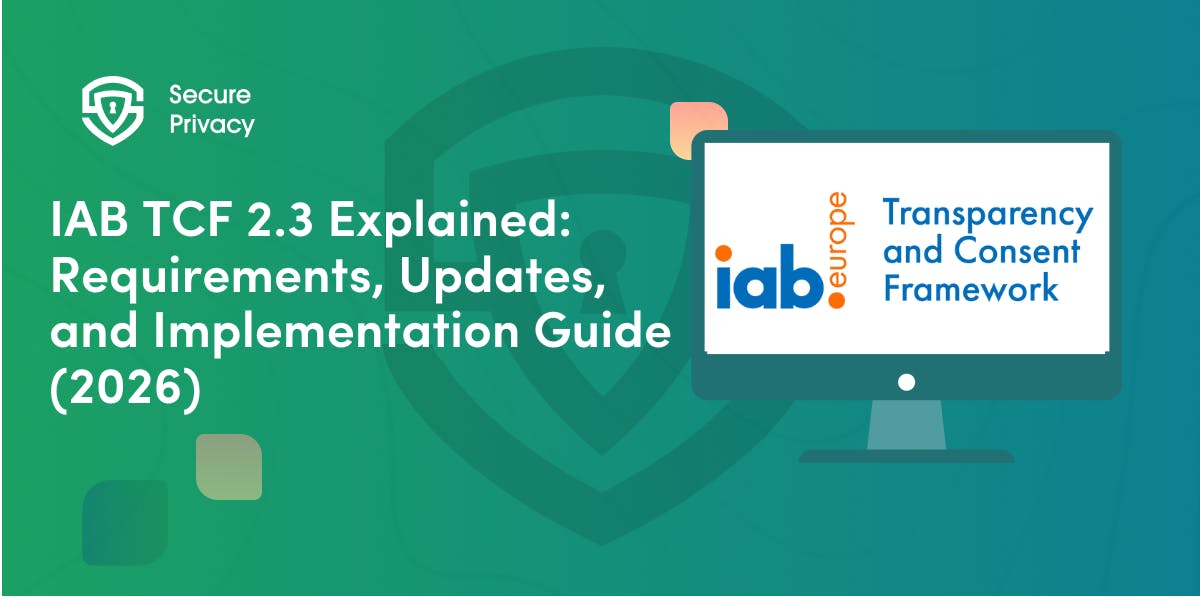Tackling Consent Fatigue Through Gamified UX Design
Can gamification techniques transform the consent management experience into something more engaging? Research suggests that strategic integration of game elements into consent interfaces not only combats fatigue but can actually enhance comprehension and decision-making. This article explores how knowledge graph-based interfaces combined with gamification elements offer a promising path forward.
Consent fatigue has emerged as a significant challenge for users and businesses alike. The constant barrage of privacy policies and cookie banners has led many individuals to blindly accept terms without understanding the implications for their personal data. This growing disconnect between meaningful consent and perfunctory acceptance threatens both user privacy and the effectiveness of data protection regulations.
Can gamification techniques transform this tedious experience into something more engaging? Research suggests that strategic integration of game elements into consent interfaces not only combats fatigue but can actually enhance comprehension and decision-making. This analysis explores how knowledge graph-based interfaces combined with gamification elements offer a promising path forward.
Understanding Consent Fatigue in the Digital Era
Before exploring solutions, we need to understand the nature and scope of consent fatigue as it manifests in today's digital landscape.
Defining the Phenomenon
Consent fatigue refers to the exhaustion individuals experience due to the constant need to provide consent for data collection and processing across digital platforms. This phenomenon manifests as a form of decision fatigue resulting from the multiplication and recurrence of consent banners, privacy notices, and cookie notifications that users encounter during their digital interactions.
The cognitive burden associated with processing these frequent consent requests leads many users to automatically accept terms without carefully considering the implications for their personal data. This pattern undermines the very purpose of consent mechanisms, transforming what should be meaningful decisions into mechanical clicks.
Causes and Implications
Several factors contribute to the prevalence of consent fatigue in contemporary digital environments:
Information overload stands as a primary cause, with lengthy privacy policies written in complex legal language overwhelming users who lack the time or expertise to fully comprehend them. Many privacy policies require college-level reading skills and would take 20+ minutes to read thoroughly—time few users are willing to invest.
The frequency of consent requests across multiple platforms compounds this problem. Users encountering dozens of consent banners daily develop habitual dismissal behaviors rather than meaningful engagement with each request.
Interface design choices that prioritize compliance over usability further exacerbate the issue. Many consent mechanisms feature confusing layouts and excessive information density that complicate rather than clarify the consent process.
These factors collectively drive users toward consent behaviors characterized by automatic acceptance rather than informed decision-making—a pattern that undermines both user privacy and regulatory intent.
Regulatory Context and Business Challenges
The regulatory landscape surrounding consent has become increasingly stringent, with frameworks like GDPR establishing specific requirements for valid consent. According to these regulations, consent must be freely given, specific, informed, and unambiguous, presenting businesses with significant implementation challenges.
Organizations must navigate the tension between regulatory compliance and user experience, striving to meet legal requirements without creating friction that drives users away. This balancing act is particularly challenging given that consent fatigue can lead to decreased user engagement, potential abandonment of services, and ultimately, diminished trust in digital platforms.
The business implications extend beyond compliance concerns to impact core metrics such as conversion rates, user retention, and brand perception. Finding more effective consent approaches thus represents both a regulatory necessity and a business opportunity.
Gamification as a UX Strategy
Gamification offers a promising approach to transform the consent experience from a burden into an engaging interaction that users willingly participate in.
Core Principles of Gamification
Gamification applies game design elements in non-game contexts to enhance user engagement and motivation through the introduction of enjoyable, challenging experiences. The approach leverages intrinsic and extrinsic motivational factors to transform routine interactions into more engaging activities that capture user attention and sustain their interest.
Core principles of gamification include creating clear goals, implementing challenge-reward systems, providing immediate feedback, and fostering a sense of progression or achievement. These elements tap into fundamental psychological drives such as mastery, autonomy, and social connection that underlie human motivation and behavior.
By incorporating these principles into consent interfaces, designers can create experiences that users find inherently more compelling and are thus more likely to engage with deeply rather than dismissing automatically.
Common Gamification Elements in Digital Interfaces
Digital interfaces employ various gamification mechanics to enhance user engagement across different contexts:
Point systems reward users for completing specific actions, creating tangible measurements of progress and achievement that motivate continued participation. In a consent context, points might be awarded for exploring different aspects of data usage policies.
Badges and achievements serve as visual representations of accomplishments, appealing to users' desire for recognition and collection. These might recognize users who have reviewed all consent categories or made conscious choices rather than blanket acceptances.
Progress bars and level systems provide users with clear visualizations of their advancement, fostering a sense of development and momentum that encourages continued interaction. Applied to consent, these could show completion of privacy preference selections.
These elements, when thoughtfully implemented, transform routine interactions into more engaging experiences that capture and maintain user attention—precisely what traditional consent interfaces fail to achieve.
Integrating Gamification to Combat Consent Fatigue
The application of gamification principles to consent interfaces requires thoughtful design approaches that enhance engagement while ensuring genuine comprehension and informed decision-making.
Knowledge Graph-Based Approaches
Knowledge graph technology offers a sophisticated foundation for implementing gamified consent interfaces by structuring complex legal and privacy information in a machine-readable, interconnected format.
This semantic model enables the system to present consent information in a more digestible format that avoids overwhelming users with excessive text. By organizing consent-related concepts into a structured knowledge graph, these systems can dynamically generate appropriate consent interfaces that adapt to specific contexts while maintaining consistency in the underlying legal frameworks.
This approach addresses one of the fundamental causes of consent fatigue—information overload—by transforming dense legal text into more accessible, interactive representations that users can more easily comprehend and engage with.
Interactive Visualization Techniques
Visual representation of consent information significantly enhances user comprehension compared to traditional text-heavy approaches. Interactive visualization techniques transform abstract privacy concepts into intuitive visual elements that allow users to see the relationships between their data, the entities accessing it, and the purposes for which it will be used.
These visualizations employ color coding, iconography, and spatial relationships to communicate complex privacy implications in ways that are immediately graspable. Research indicates that graphical visualization of informed consent requests helps raise awareness of privacy implications without requiring users to process extensive text.
By enabling users to visually explore the consequences of their consent decisions through interactive elements, these interfaces reduce cognitive load while potentially increasing the likelihood that users will make truly informed decisions rather than automatically accepting terms out of fatigue or confusion.
Reward Systems and Progressive Disclosure
Strategic implementation of reward systems can transform the consent process from a perceived burden into an engaging interaction that users willingly participate in. Point-based systems reward users for engaging meaningfully with consent information, such as exploring details about data usage or adjusting privacy preferences.
These points can be exchanged for tangible benefits such as discounts, exclusive content, or enhanced features, creating extrinsic motivation for consent engagement. Progressive disclosure techniques present consent information in digestible segments, rewarding users for advancing through each level of information rather than overwhelming them with everything at once.
This approach aligns with the gamification principle of incremental challenge and reward, making the consent process feel more like a guided journey than an intimidating wall of text. By structuring consent as a rewarding progression rather than a one-time hurdle, these systems encourage deeper engagement with privacy information.
Social Elements and Competition
The integration of social comparison mechanisms can leverage users' natural tendencies toward competition and community belonging to enhance engagement with consent processes. Leaderboards display campaign participation metrics, allowing users to compare their privacy engagement levels with others and potentially motivating increased interaction through social influence dynamics.
Community challenges encourage collective participation in privacy awareness activities, fostering a sense of shared responsibility and normalizing active consent management. Balanced implementation of these elements must be carefully designed to avoid creating pressure that might compromise the voluntary nature of consent while still benefiting from the motivational power of social dynamics.
Research indicates that these social gamification elements can significantly affect users' willingness to consent and their level of engagement with privacy information, though effectiveness varies across different user demographics and must be designed with these variations in mind.
Practical Implementation Considerations
Implementing gamified consent interfaces presents several practical challenges that must be addressed to ensure effectiveness, compliance, and ethical use.
Balancing Personalization and Standardization
Implementing gamified consent interfaces requires careful consideration of the tension between personalized experiences and standardized approaches. Personalization tailors gamification elements to individual user preferences, potentially increasing engagement by matching elements to users' motivational profiles and interaction patterns.
Data indicates that male users generally respond more positively to achievement and competition-based elements, while female users often prefer cooperative and socially oriented gamification features. However, excessive personalization can create challenges for evaluating intervention effectiveness and ensuring consistent privacy protection across user segments.
Standardized approaches provide consistency in delivery and facilitate comparison of outcomes across different implementations, enabling more reliable assessment of effectiveness. The optimal approach likely involves a balanced framework that standardizes core consent requirements while allowing for targeted personalization of engagement elements based on user demographics, interaction patterns, and expressed preferences.
User-Centered Design Principles
Effective gamified consent interfaces must be built upon solid user-centered design foundations to ensure they enhance rather than complicate the consent experience. This approach begins with comprehensive user research to understand target audiences' privacy concerns, digital literacy levels, and preferences regarding game-like elements.
Interfaces should prioritize clarity and simplicity in information presentation, using plain language and intuitive visual cues to communicate complex privacy concepts without unnecessary jargon or complexity. Accessibility considerations must be integrated from the beginning, ensuring that gamified elements do not create new barriers for users with disabilities or those using assistive technologies.
Iterative testing with representative user groups is essential to refine the balance between engagement and information comprehension, with particular attention to whether gamification elements enhance or detract from users' understanding of consent implications.
Ethical Considerations and Transparency
The introduction of gamification elements into consent processes raises important ethical questions that must be carefully addressed to maintain trust and legitimacy. Designers must ensure that gamification does not manipulate users into providing consent without genuine understanding, as this would undermine the fundamental principle of informed consent.
Transparency about the presence and purpose of gamification elements is essential, with clear disclosure that engagement mechanics are being used and how they relate to the consent process. The voluntary nature of consent must be preserved despite the motivational pull of game elements, with users maintaining genuine freedom to withhold or withdraw consent without significant negative consequences.
Organizations should regularly audit their gamified consent systems to detect and address any patterns suggesting that gamification is leading to consent being given without adequate comprehension of implications or under subtle pressure that compromises its voluntary nature.
Case Studies and Empirical Evidence
Examining real-world implementations provides valuable insights into the effectiveness of gamified consent approaches.
The CampaNeo Project Framework
The CampaNeo project represents a significant implementation of gamification principles in consent solicitation, offering valuable insights into practical applications and outcomes. This initiative developed a knowledge graph-based user interface specifically designed to raise legal awareness and ease individuals' comprehension of consent through integrated gamification elements.
The system employs a semantic model that unifies consent representation across entities involved in data sharing, ensuring consistent understanding while enabling more engaging presentation. Research conducted on the CampaNeo interface demonstrated that graphical visualization of informed consent requests helped raise users' awareness of legal implications compared to traditional text-based approaches.
The implementation included specific gamification elements such as a point-based system that rewarded users for campaign participation and data sharing, with points potentially exchangeable for tangible benefits like fuel discount coupons. Notably, the system maintained GDPR compliance while implementing these gamification elements, demonstrating that regulatory requirements and engaging user experiences can coexist effectively.
Empirical Results and Effectiveness Metrics
Research on gamified consent interfaces has yielded promising empirical evidence regarding their effectiveness in addressing consent fatigue. Studies investigating knowledge graph-based gamified interfaces found that they significantly improved users' comprehension of consent implications compared to traditional text-heavy approaches.
Participant feedback indicated that gamification elements made the consent process more engaging and less tedious, with users spending more time exploring consent details when game-like elements were present. Metrics such as time spent reviewing privacy information, comprehension test scores, and consent withdrawal rates have been used to measure effectiveness across different implementations.
Research has also identified demographic variations in response to gamification, with studies noting gender differences in preference for competitive versus cooperative elements. Long-term studies suggest that the effectiveness of gamified consent approaches may increase over time as users become more familiar with the interfaces and develop habits around privacy management, though maintaining engagement beyond novelty effects remains a challenge requiring ongoing refinement.
Future Directions and Recommendations
As gamified consent approaches continue to evolve, several key developments and best practices are emerging that will shape their future implementation.
Evolving Regulatory Environment
The regulatory environment surrounding consent continues to evolve, presenting both challenges and opportunities for gamified approaches. Privacy regulations are trending toward requiring more granular, specific consent mechanisms that empower users with greater control over their personal data.
Organizations implementing gamified consent solutions must design systems with sufficient flexibility to adapt to these evolving requirements without requiring complete rebuilds. Regulatory bodies are increasingly focused on the quality and meaningfulness of consent rather than mere compliance with technical requirements, creating space for innovative approaches that demonstrably improve user comprehension and engagement.
Forward-thinking organizations should maintain open communication channels with regulatory authorities to ensure novel gamified approaches meet regulatory intent while potentially helping to shape future guidelines. This proactive engagement with the evolving regulatory landscape can position gamified consent solutions as exemplars of privacy-enhancing technologies rather than mere compliance mechanisms.
Toward Adaptive and Intelligent Consent Systems
The future of gamified consent interfaces likely lies in more sophisticated, adaptive systems that leverage artificial intelligence to deliver personalized yet standardized experiences. Machine learning algorithms could analyze user behavior patterns to identify optimal timing, format, and gamification elements for consent requests based on individual preferences and interaction history.
These systems might dynamically adjust the presentation of consent information based on detected user comprehension levels, providing additional context or simplification as needed. Intelligent consent systems could integrate with broader digital experience ecosystems, recognizing appropriate moments to refresh consent or provide updates on data usage that align with user workflows rather than disrupting them.
Research suggests that such adaptive approaches may better address the tension between personalization and standardization by maintaining core compliance elements while intelligently varying presentation and engagement mechanics based on contextual factors and individual user needs.
Building Effective Consent Experiences for the Future
The intersection of consent fatigue and gamified UX design represents a promising frontier for addressing one of the most persistent challenges in digital privacy. By transforming the consent process from a burdensome obligation into an engaging interaction, organizations can enhance user awareness while maintaining regulatory compliance.
The evidence reviewed suggests that knowledge graph-based approaches combined with carefully selected gamification elements can significantly improve user comprehension and engagement with consent information. However, successful implementation requires careful balancing of competing considerations, including personalization versus standardization, engagement versus potential manipulation, and innovation versus compliance requirements.
Gamified consent approaches must remain adaptable while maintaining their core function of facilitating genuine informed consent. By embracing these approaches, organizations can work toward digital environments where consent processes enhance rather than detract from user experience, ultimately building stronger foundations of trust in our increasingly data-driven world
Get Started For Free with the
#1 Cookie Consent Platform.
No credit card required

What is Cookie Consent? A Quick 2026-Ready Glance
Your website loads. Cookies track users. But without proper cookie consent, you're violating GDPR — risking fines up to €20 million or 4% of global revenue. Cookie consent is the legally required mechanism by which websites obtain explicit user approval before deploying non-essential tracking technologies. This requirement stems from GDPR Article 4(11) and the ePrivacy Directive, mandating that consent must be freely given, specific, informed, and unambiguous.
- Legal & News

DSAR Tools Explained: Best Software for Automating Privacy Requests
You're drowning in data subject access requests. Manual searches through dozens of systems miss regulatory deadlines and expose organizations to fines starting at $2,500 per violation. The solution? DSAR tools — purpose-built software that automates the entire process of responding to data subject access requests, from intake to delivery.
- Legal & News

IAB TCF 2.3 Explained: Requirements, Updates, and Implementation Guide (2026)
Your ad revenue dropped 40% overnight. Google stopped bidding on your inventory. Your DSP partners flagged your traffic as non-compliant. The culprit? An outdated TCF 2.2 consent string after the February 2026 enforcement deadline.
- Legal & News
- Cookie Consent

